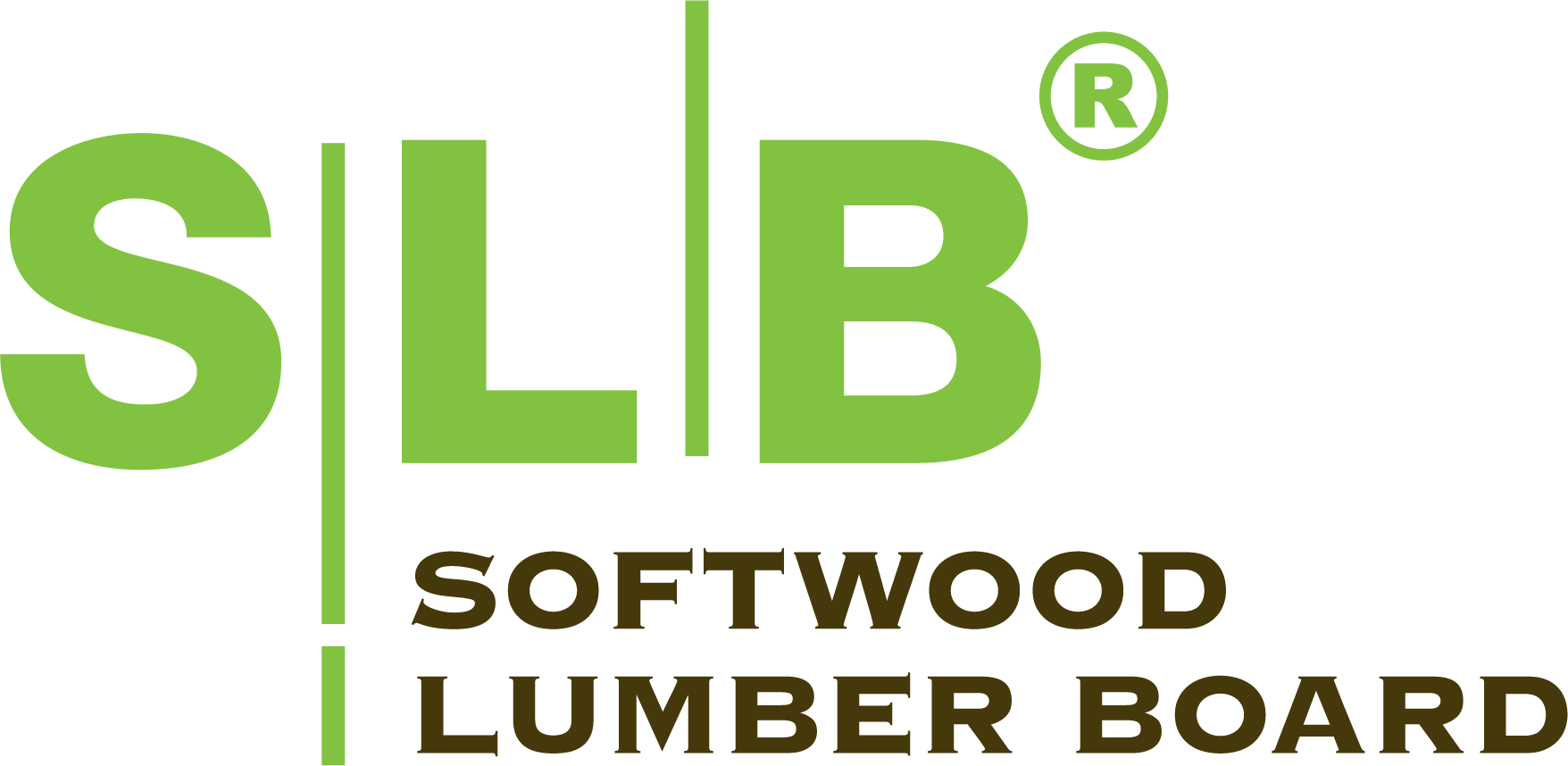HIGHLIGHTS
PROGRAM UPDATES
The AWC Conducts Full-Scale Diaphragm Tests Certification Launched for New Tall Mass Timber Special Inspector Think Wood Sponsors Expert Panels on Top Construction Trends Think Wood in Construction Specifier: Wood’s Role in Lower Carbon Buildings WoodWorks Reaches 6,000+ Specifiers in Q3 The AWC Celebrates 10th AnniversaryINDUSTRY NEWS
DIY Activity Expected to Slow, Though Home Improvement Market Remains Strong New Airport Terminal Features Expansive Mass Timber Roof New Catalog of Timber-Based Building Systems Available FEA Predicts Sharp Rise in North American CLT Capacity Interest in Homebuying Grows Amid Pandemic Companies Turn to Healthier Buildings, Biophilic Design FPInnovations Research Library at Your Service Fewer New Houses Include Wood Decks Remote Work Spurs an Exodus From Cities, High-Priced MarketsINSIGHTS ON THE COMPETITION
PCA Launches Sustainability Promotions InitiativeProgram Updates
The AWC Conducts Full-Scale Diaphragm Tests
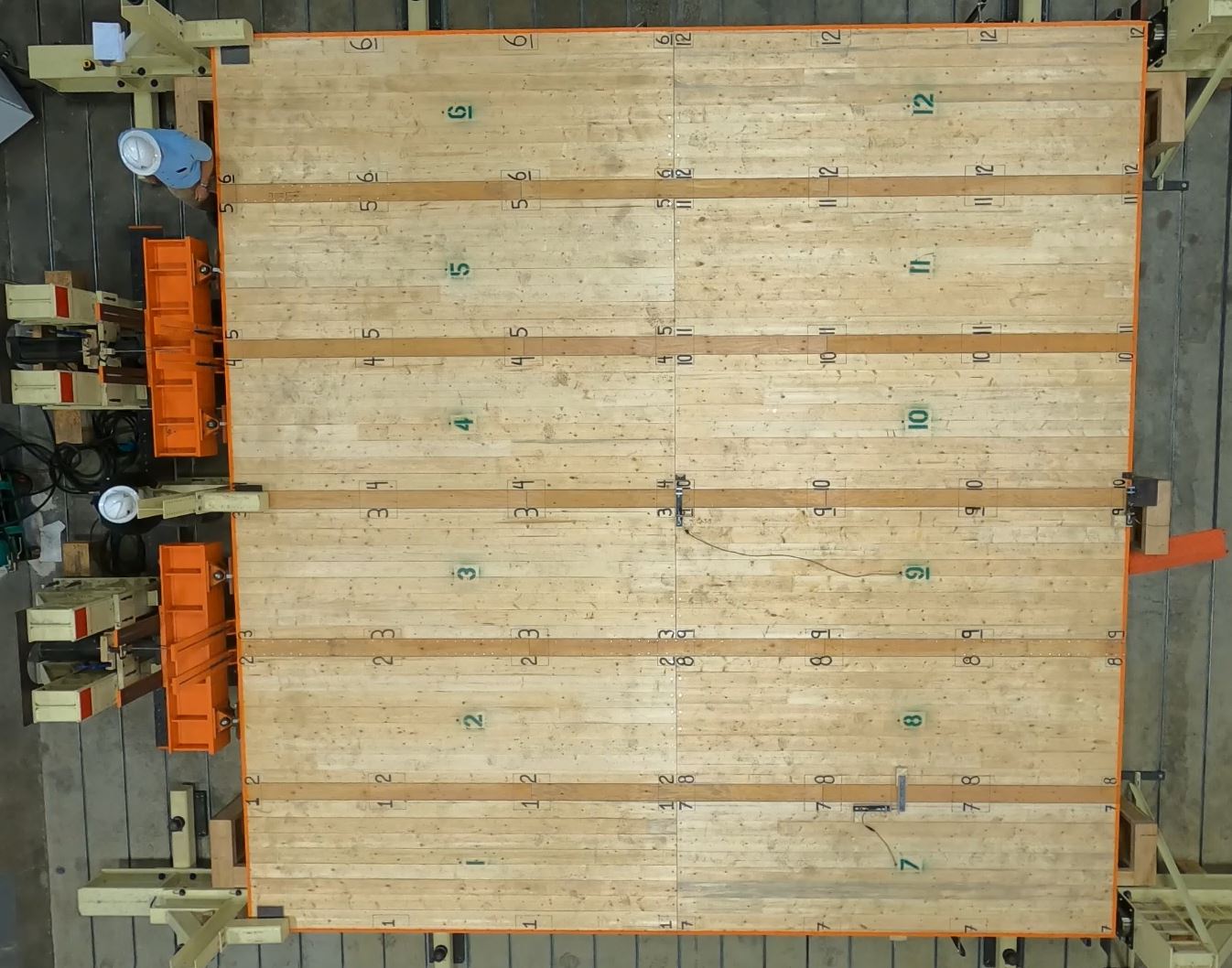
The AWC completed two full-scale cross laminated timber (CLT) diaphragm tests in an effort to generate the strength and deformation data needed to evaluate CLT diaphragm resistance to lateral wind and earthquake forces. The diaphragms performed well with the diaphragm strength exceeded targets, while load-deformation response was primarily governed by connection behavior.
The tests were completed at Weyerhaeuser’s ISO 17025-accredited test facility in Federal Way, Washington, and used the CLT diaphragm design approach found in the 2021 Special Design Provisions for Wind and Seismic, which is aligned with the 2018 National Design Specification® for Wood Construction. The results will allow researchers to identify opportunities for optimization in diaphragm design and advance the use of this technology in floors and roofs.
Certification Launched for New Tall Mass Timber Special Inspector
The International Code Council (ICC) recently announced the introduction of the Tall Mass Timber Buildings Special Inspector Certification, which was a provision of the Group B tall mass timber code development process. The curriculum and test will ensure that inspectors are qualified to inspect critical elements of mass timber construction.
The AWC’s Fire Service Relations Manager, Ray O’Brocki, served on the ICC’s Exam Development Committee with building officials and design and construction professionals. The committee identified the various tasks of a tall mass timber inspector, assigned a percentage of importance to each, and then created test questions based on the 2021 International Building Code (IBC), 2021 International Fire Code, and Mass Timber Buildings and the IBC®, which was created by the AWC and ICC.
Think Wood Sponsors Expert Panels on Top Construction Trends
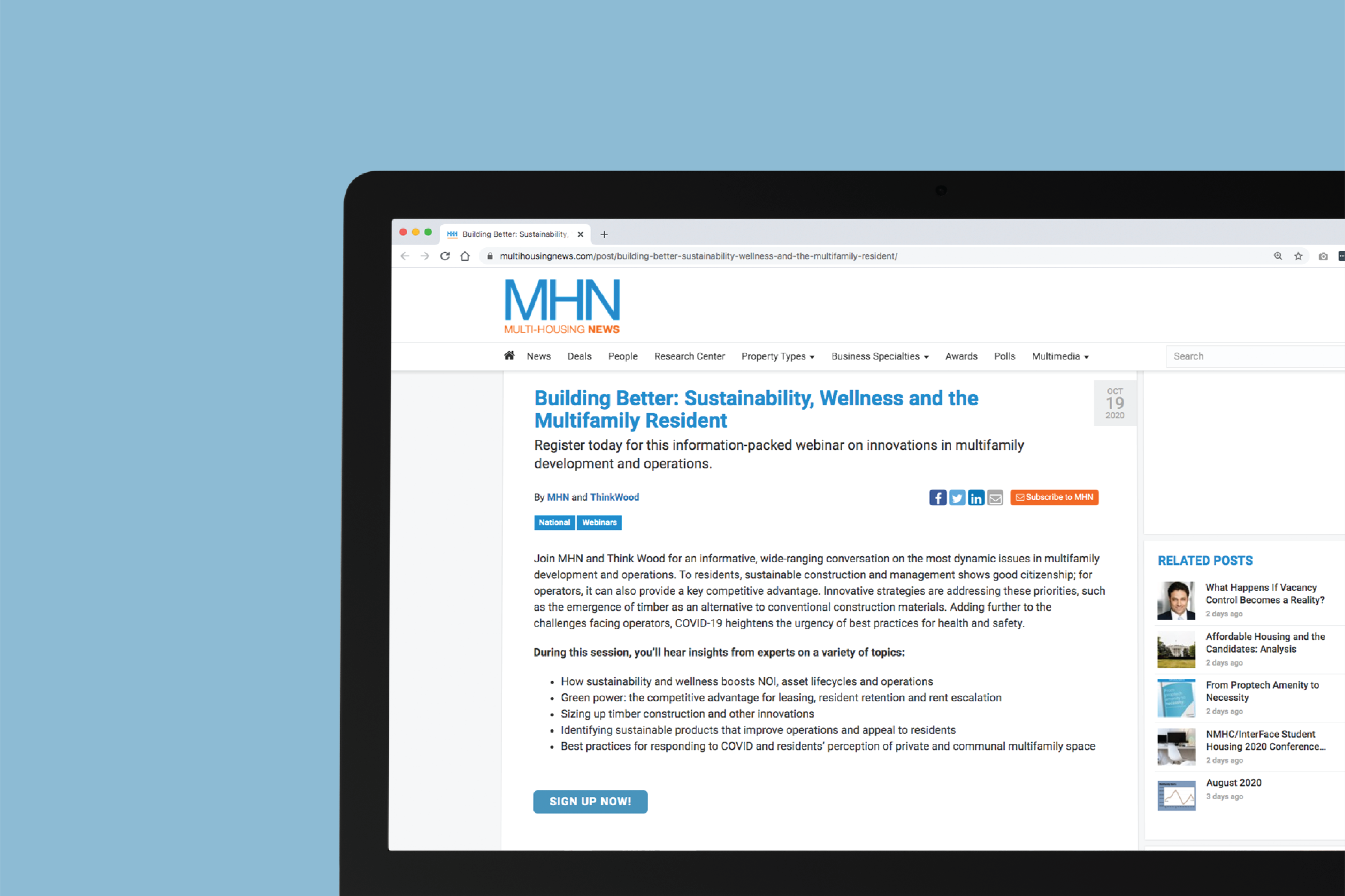
Think Wood is sponsoring two virtual panels with top architects, developers, and influencers to explore wood’s role in sustainability, occupant wellness, and hybrid construction, all of which are expected to be key construction trends in 2021. Besides imparting wood-friendly messaging, such events enable Think Wood to generate contacts for its database and identify qualified project leads.
In November, Think Wood sponsored a Multi-Housing News panel, Building Better: Sustainability, Wellness and the Multifamily Resident, which discussed how sustainable construction, including the use of timber products, can provide key competitive advantages. The panel featured Jessica Cooper of International WELL Building Institute, Erin Hatcher of AMLI Residential, John Klein of Generate Architecture + Technologies, and Phil Lukowski of Waterton. More than 500 individuals registered for the webinar and will be added to the Think Wood database.
On December 3, Think Wood will sponsor Architectural Record’s AIA-accredited webinar, A Hybrid Approach: Combining Mass Timber with Steel and Concrete, which will explore how and why design teams are turning to mass timber and hybrid systems to increase environmental attributes and speed construction. The webinar will feature Brian Court, Partner, Miller Hull Partnership; Max Richter, Senior Associate and Co-Director of the Material Performance Lab, Perkins and Will; and John Peronto, Senior Principal, Thornton Tomasetti.
Mark your calendar and register now if you would like to participate.
Think Wood in Construction Specifier: Wood’s Role in Lower Carbon Buildings
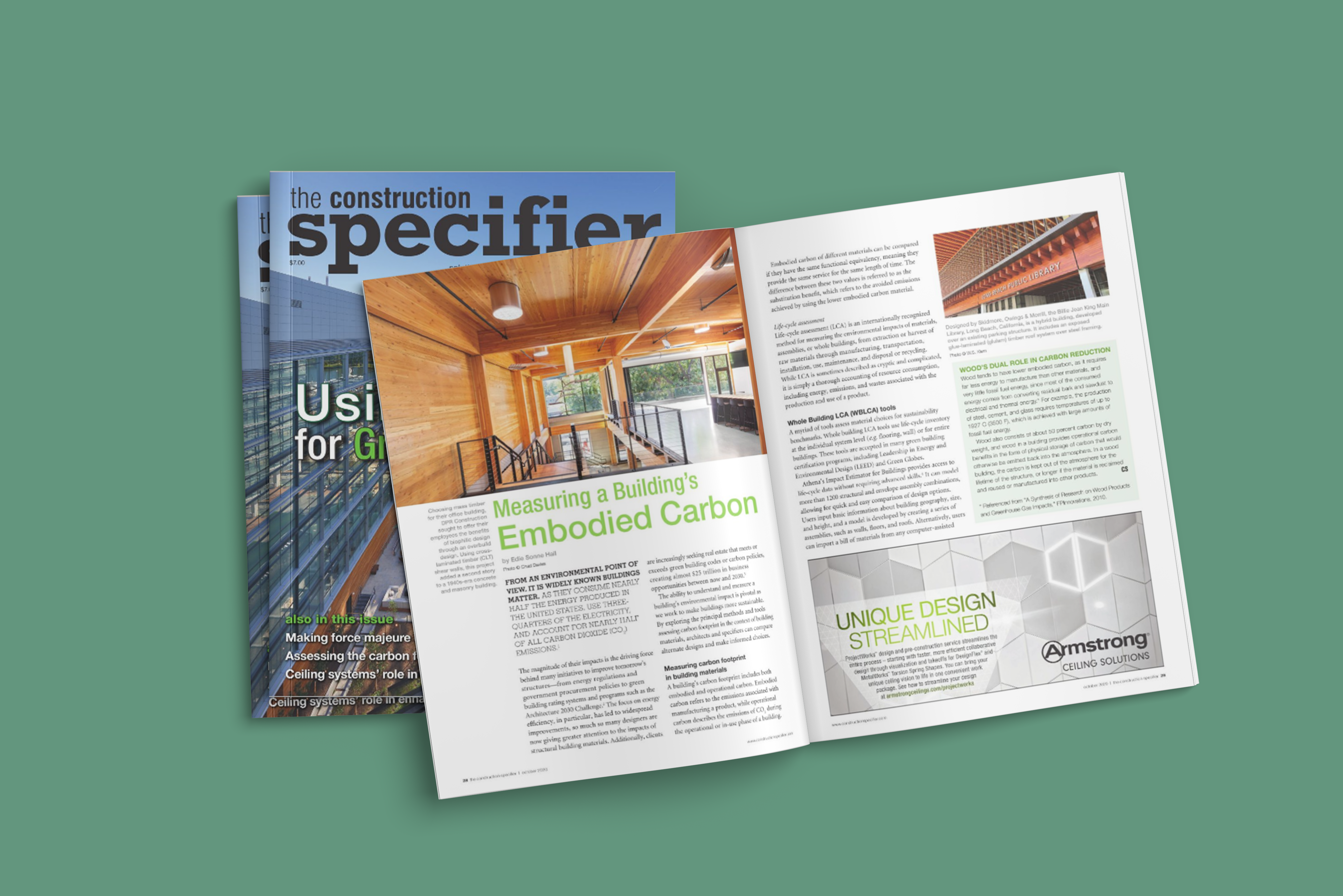
Think Wood is leading the building industry conversation on carbon via its educational offerings, case studies, and articles that showcase wood’s carbon story.
In the October issue of Construction Specifier, Think Wood placed the article “Measuring a Building’s Embodied Carbon,” which was written by forestry and sustainability expert, Edie Sonne Hall. The article educates architects and engineers on wood life-cycle assessments (LCAs), environmental product declarations (EPDs), and wood’s role in carbon reduction and sequestration, drawing heavily on a Think Wood CEU, How to Calculate the Wood Carbon Footprint of a Building, which is currently the top-performing class on The Wood Institute website.
Sonne Hall recently spoke at Architecture 2030’s Carbon Positive conference and worked closely with the AWC in support of the Wood Carbon Series with the Carbon Leadership Forum. The series convened wood experts to answer common and critical questions about wood’s carbon impacts on the building industry.
WoodWorks Reaches 6,000+ Specifiers in Q3
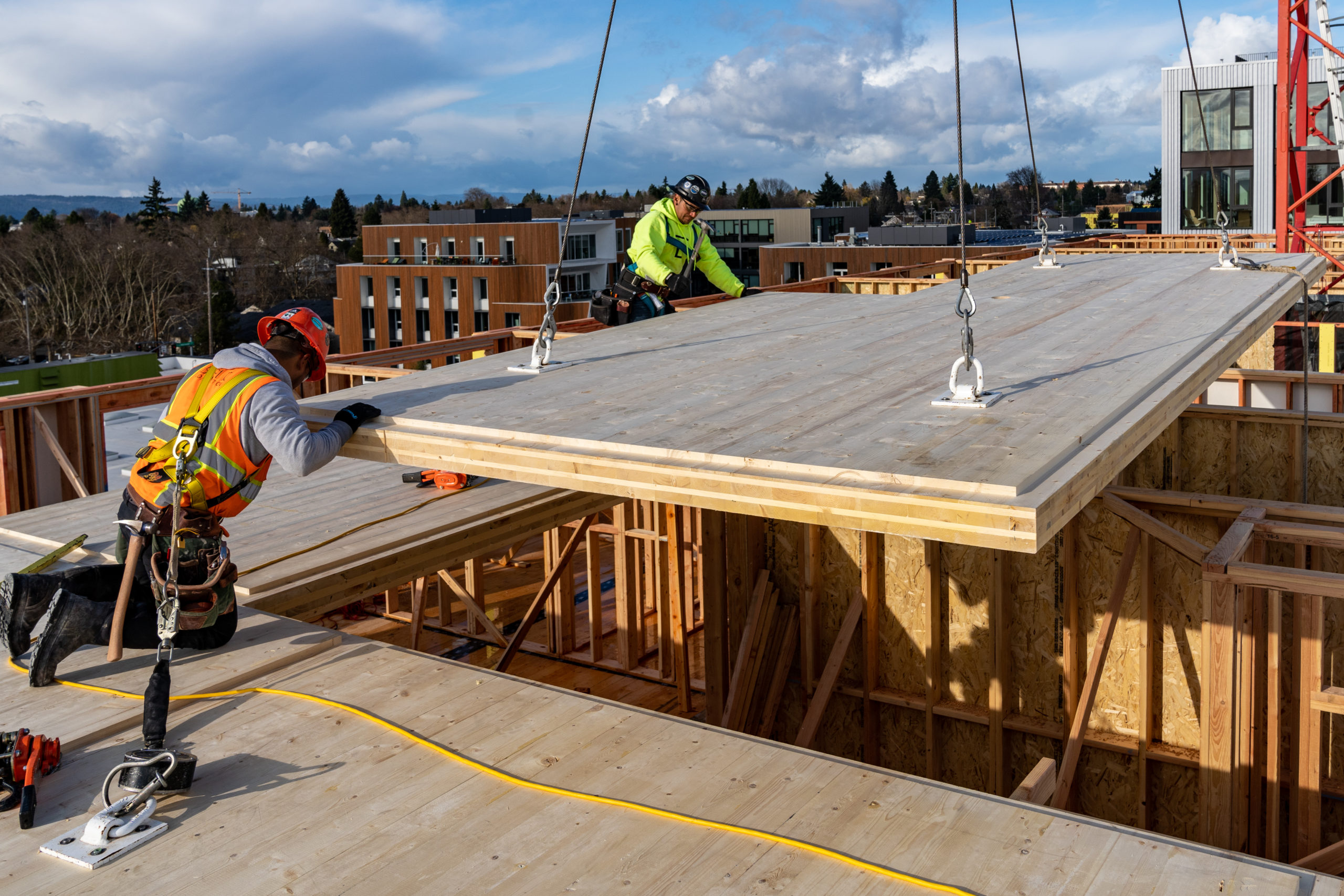
At the start of the pandemic, WoodWorks quickly pivoted to online education to ensure that it was still providing valuable information to the architecture, engineering, and construction community. More than six months in, WoodWorks’ online events are attracting two to four times more attendees than past in-person events and delivering up to three times more new contacts.
WoodWorks anticipates continuing to hold events online in 2021, but also still believes that the most effective approach is to host events of all types and sizes and on a wide variety of topics to appeal to different audiences. Regardless of the forum used, WoodWorks continues to emphasize strong and varied content and speakers, which reinforce its reputation for high educational value.
Photo Credit: Marcus Kauffman
The AWC Celebrates 10th Anniversary

The wood products industry’s annual celebration of National Forest Products Week in October was made even more special this year as it coincided with the American Wood Council (AWC)’s 10th anniversary of being an independent trade association. Throughout the week, the AWC highlighted its major accomplishments over the past decade in emails to its membership and partner organizations. A compilation of its many accomplishments can be viewed in a short video on the AWC’s YouTube page.
Industry News
DIY Activity Expected to Slow, Though Home Improvement Market Remains Strong
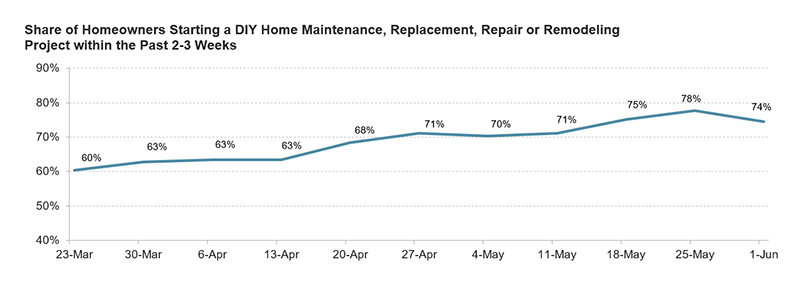
Although the overall home improvement market is expected to remain strong, the Harvard Joint Center for Housing Studies projects that the recent, pandemic-induced surge in do-it-yourself (DIY) home improvement activity is likely to slow to pre-pandemic levels. By June, an estimated 80% of homeowners had started some type of DIY home maintenance, replacement, repair, or remodeling project, with most attributing their decision to undertake their project(s) to newfound time. The 2020 DIY bump is at odds with the longer-term trend of DIY’s shrinking share in the home improvement market.
New Airport Terminal Features Expansive Mass Timber Roof

Award-winning architecture and interior design firm ZGF Architects recently published a preview of the new main terminal at Portland International Airport in Oregon. Scheduled for completion in 2025, the light-filled terminal features an expansive timber roof made from sustainably sourced wood from the Pacific Northwest. In keeping with biophilic design trends, the terminal and its nature-infused interiors are designed to promote and support health, well-being, and safety.
Read more and see renderings here.
New Catalog of Timber-Based Building Systems Available
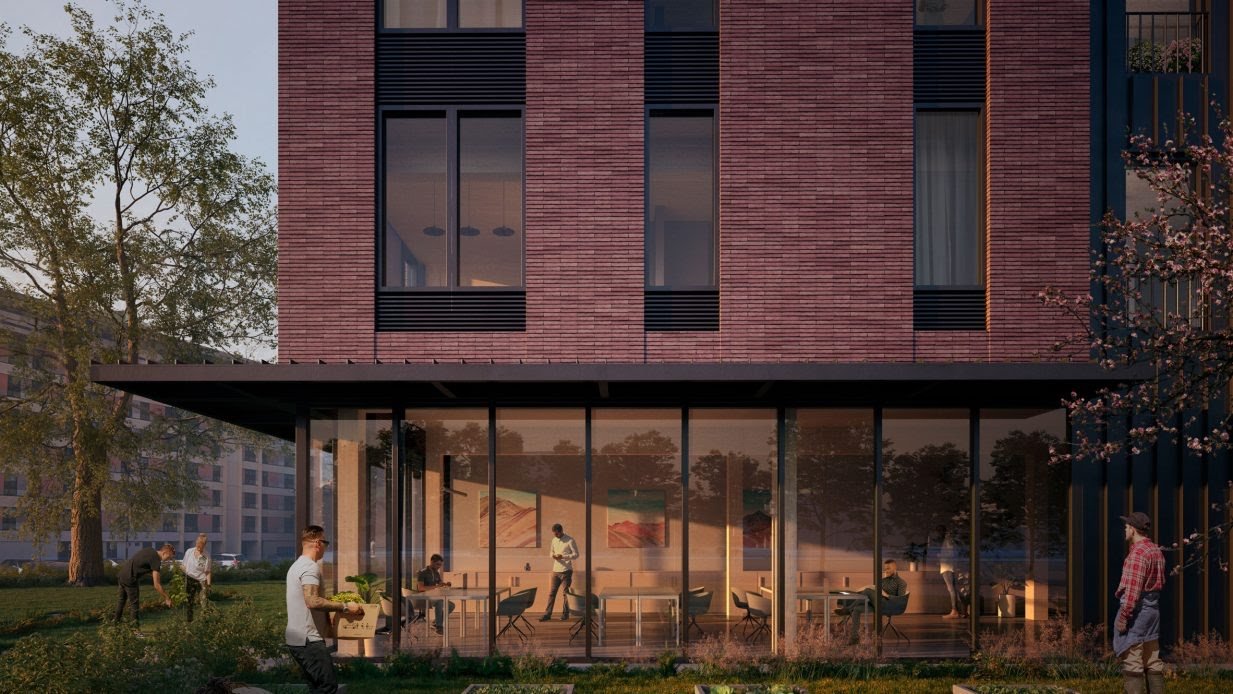
The Boston-based architecture firm Generate has developed the Tallhouse online catalog to document and disseminate examples of pre-engineered, timber-based building systems for use by the architecture community. Generate’s hope is that members of the architecture community can adapt the various systems for use in their own large-scale projects, with a particular aim of promulgating affordable housing and carbon-friendly building options.
Read more about the Tallhouse online catalog here.
FEA Predicts Sharp Rise in North American CLT Capacity
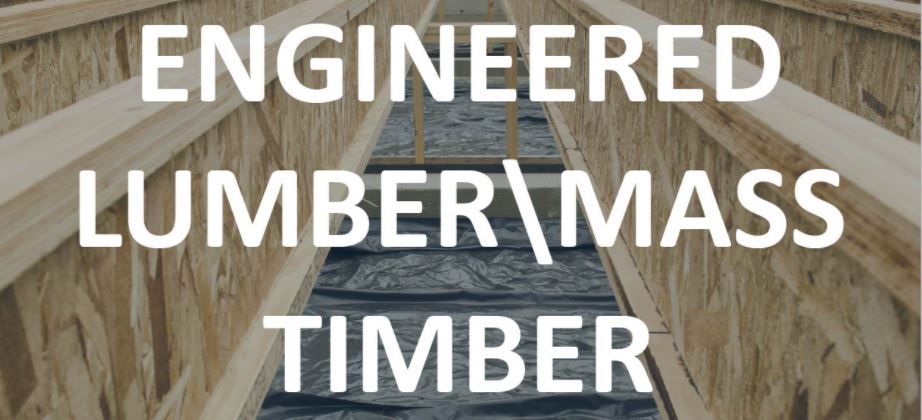
Art Schmon of Forest Economic Advisors (FEA) estimated that global CLT capacity will reach approximately 5.5 billion board feet by 2024, with more than 95% of this capacity coming from North America and Europe. Writing in FEA’s 2020 Q3 Global Mass Timber Forecast, Schmon predicted that growth in both capacity and demand in North America will be exponential and will spread eastward following an initial concentration on the West Coast.
Read more about Schmon’s forecast here.
Interest in Homebuying Grows Amid Pandemic
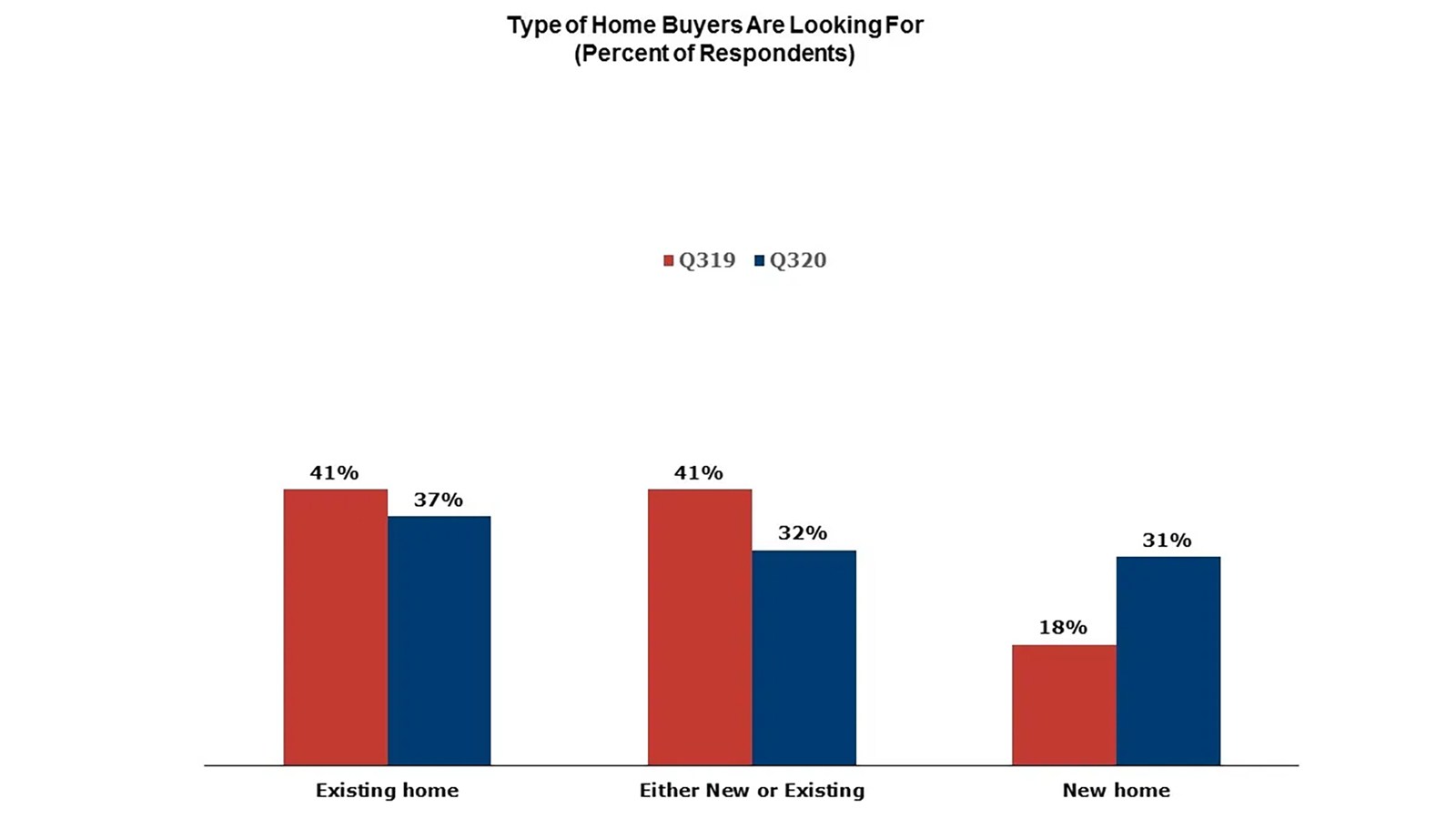
According to the NAHB’s Housing Trends Report for Q3 2020, 13% of Americans are reportedly considering a home purchase in the next 12 months, a one percentage point increase over last year. Millennials and members of Gen Z and Gen X all registered increased interest year-over-year, while baby boomers’ interest remained flat. Prospective home buyers are increasingly looking toward new homes, with 31% interested in a newly built home, up from 18% a year earlier.
Read more about these trends here.
Companies Turn to Healthier Buildings, Biophilic Design
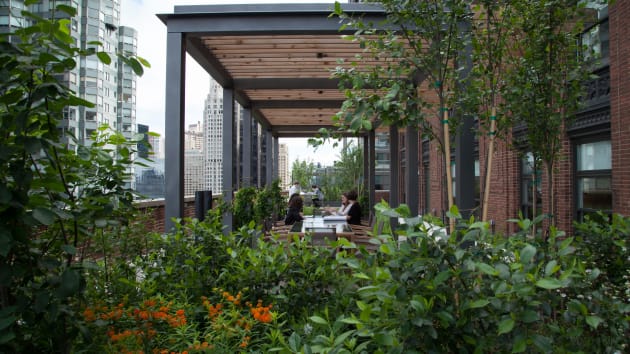
CNBC recently covered the rise in biophilic design in office spaces, including as prompted by pandemic-related restrictions and lifestyle changes. While architects and designers have long considered sustainability and workplace quality, many believe that these will be in higher demand as companies rethink their current and future office spaces. According to Gail Napell, a sustainability specialist with architecture firm Gensler, “COVID-19 accelerated our corporate clients’ interest in health and wellness. These are inextricably linked with work that is better for the environment.”
Read more from CNBC here.
FPInnovations Research Library at Your Service

FPInnovations’ recently redesigned digital Research Library is ready for use. The digital library contains more than 10,000 documents covering more than 50 years of research as well as a growing number of on-demand webinars. Read more about the Research Library here, and visit it today at library.fpinnovations.ca.
Fewer New Houses Include Wood Decks
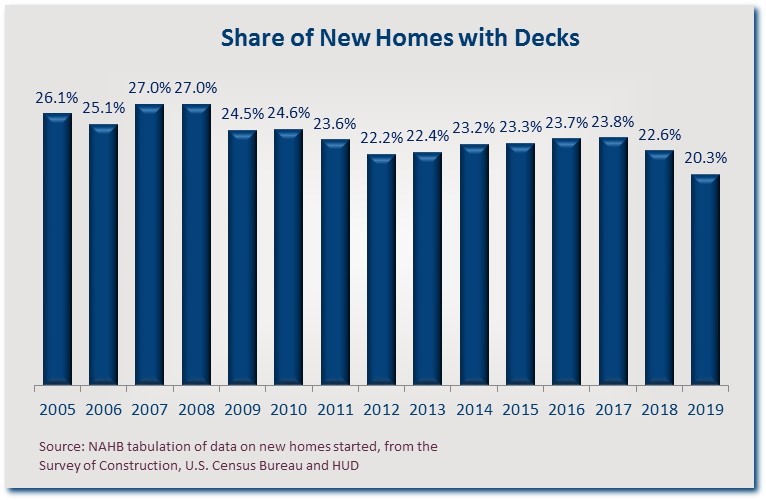
Based on U.S. Census Bureau Survey of Construction data, NAHB’s Eye on Housing reported that only 20.3% of the 879,000 single-family homes started in 2019 included decks, down more than 2% from the prior year and the lowest share since 2005. Deck’s proportion looks even smaller when noting that 67.4% of new homes started in 2019 included another exterior amenity, such as a porch.
Home Innovation Research Labs’ 2020 Annual Builder Practices Survey provides more information about the types of decking built on new homes in 2019. Their report shows that the average deck size on a new single-family home was about 270 square feet and that composite supplanted treated wood as the material builders used most often.
Read more here.
Remote Work Spurs an Exodus From Cities, High-Priced Markets
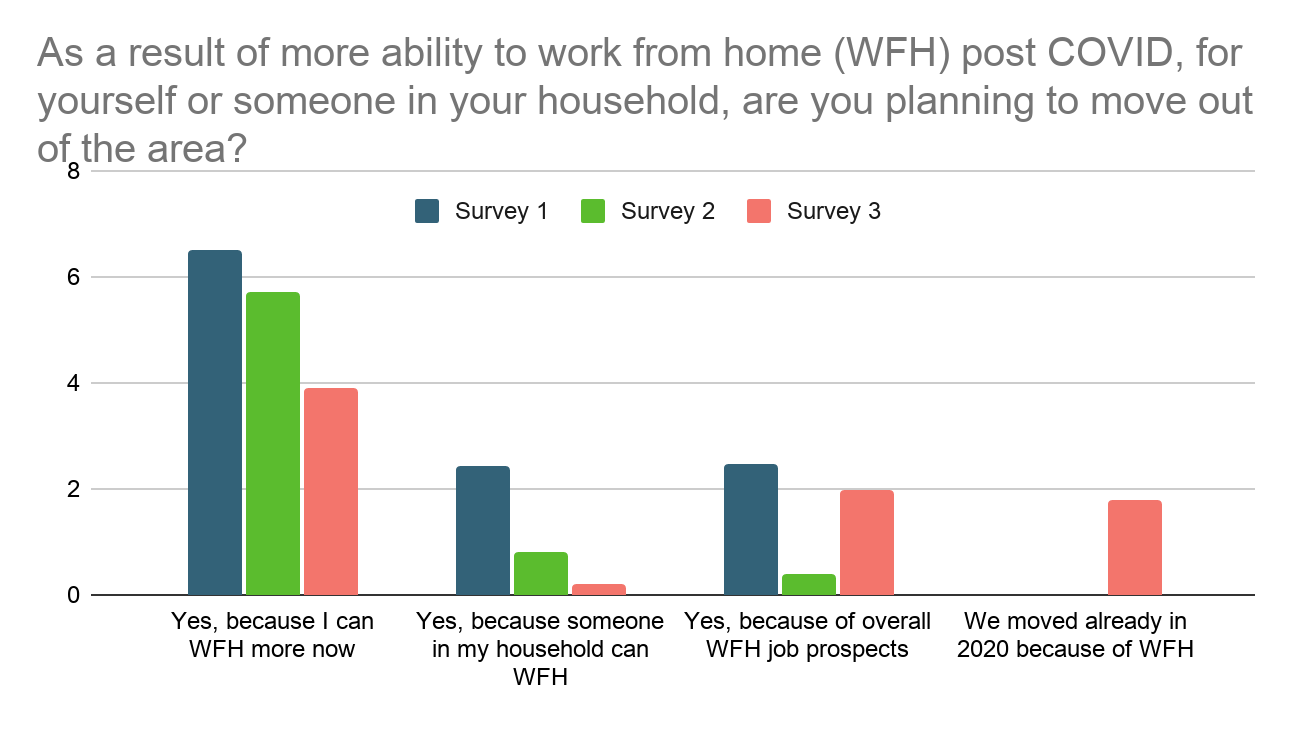
The freelancing platform Upwork reports that signals remain strong that the ability to work remotely has affected where people plan to live. Using data from Google Consumer Surveys, Upwork reports that:
- Anywhere from 14 million to 23 million Americans are planning to move as a result of remote work, and near-term migration rates may be three to four times higher than normal.
- 6% of those planning to move are currently based in a major city.
- More than half of those planning to move expect to secure housing that is significantly more affordable than their current home.
Read more about their analysis and findings here.
Insights on the Competition
PCA Launches Sustainability Promotions Initiative

The Portland Cement Association (PCA), representing America’s cement manufacturers, recently launched an initiative to promote portland-limestone cement (PLC) and its sustainability benefits. PLC is engineered with more limestone and emits approximately 10% less greenhouse gas. The initiative is anchored by a new website that offers product information, case studies, frequently asked questions, information on code acceptance, and a PLC calculator where design/build professionals can calculate how much PLC can reduce their project’s carbon footprint.
According to PCA President and CEO Mike Ireland, “PLC is another example of the cement industry evolving over the years, continuing to innovate and sustainably producing the high-quality cement that is needed to help keep America’s infrastructure strong and resilient.”
Visit the initiative at https://www.greenercement.com/.
Industry Resources
FEA Housing Dashboard
These housing dashboards are provided compliments of Forest Economic Advisors (FEA):
View the November Dashboard
Virginia Tech’s Monthly Housing Report
This monthly housing commentary report is a free service of Virginia Tech and is intended to help one gauge future business activity in the U.S. housing market.
September Reports (released in November 2020)
Part A: September Housing Commentary
Part B: September Economic Conditions


